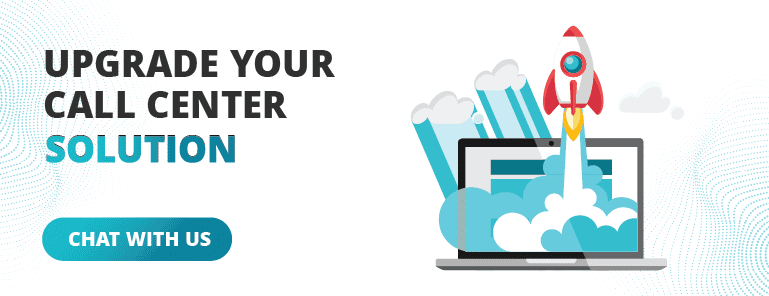Nothing frustrates a customer more than repeating their story five times to five different agents. You’ve been there, right? Maybe you called a company, emailed them, and even sent a DM on social media, only to find no one seemed to know what the last person told you. It’s infuriating. And your customers think so too. That’s why setting up an omnichannel contact center is a must to meet modern expectations.
But nearly half (43%) of business leaders find creating their omnichannel strategy a challenge, despite the clear need and a rising demand, according to Forrester. To help, we put together this guide on what makes an omnichannel contact center run and how to set one up to wow your customers while keeping your team both productive and happy.
What is an Omnichannel Contact Center?
An omnichannel contact center is like the conductor of a symphony. It ensures every instrument (read: channel) plays in harmony. Unlike traditional setups where communication channels like phone, email, chat, and social media operate in silos, an omnichannel contact center integrates these into one seamless system.
This integration gives agents a complete view of the customer’s journey across channels. Whether a customer starts with a social media inquiry, moves to live chat, and finishes with a phone call, an omnichannel system ensures the story is intact—no missing pieces, no repeats.
Omnichannel vs. Multichannel: What’s the Difference?
It’s easy to confuse omnichannel with multichannel. Both involve multiple communication channels, but there’s a critical difference.
- Multichannel contact center. Think of this as a patchwork quilt. Each channel exists, but they don’t talk to each other. A customer may email one day and call the next, but the agent won’t have context from previous interactions.
- Omnichannel contact center. This is a sleek, unified tapestry. All channels are connected, creating a cohesive experience for both customers and agents.
Omnichannel contact centers empower agents to provide personalized, efficient support because they have all the necessary information at their fingertips. It’s a game-changer for customer satisfaction (CSAT) and operational efficiency.
A Few Key Benefits of an Omnichannel Contact Center
Still on the fence about upgrading? Here are a few reasons why omnichannel is worth the investment:
- Improved CSAT. Happy customers stick around. An omnichannel approach ensures customers feel heard and valued, no matter the channel.
- Boosted agent productivity. Unified customer histories save agents from scrambling for context, allowing them to focus on solutions instead of detective work.
- Higher operational efficiency. Streamlined workflows and a centralized platform reduce redundancies and speed up resolutions, saving time and money.
5 Steps to Set Up Your Omnichannel Contact Center
Step 1: Map Your Customer Journeys Across Every Channel
You can’t fix what you don’t understand. Start by identifying where and how your customers interact with your business. Are they contacting you through social media? Email? Live chat? Phone?
- Look at common customer pathways, like product inquiries on social media leading to an email exchange.
- Use tools like journey mapping software to visualize these paths.
- Incorporate these insights into the design of your contact center.
By mapping the journey, you’ll ensure no channel gets left behind in the omnichannel experience.
Step 2: Choose the Right Omnichannel Contact Center Platform
Technology makes or breaks your omnichannel strategy. The platform you choose needs to integrate seamlessly with your existing tools and support your business goals.
What to look for in a platform:
- A unified interface for managing all channels
- Integration with UCaaS and CCaaS systems, like Broadvoice GoContact
- AI-driven features for smarter routing and customer insights
Check out your buyer’s guide to omnichannel contact center software here.
Step 3: Use Data for a 360-Degree View of Your Experience
Data is your secret weapon. By consolidating customer data into one place, you’ll unlock insights that drive actionable improvements.
- Use CRM integrations to keep track of customer histories
- Analyze patterns in interactions to identify common pain points
- Activate the data by using it to personalize future interactions
Step 4: Train Your Agents
Technology is only as good as the people using it. Agents need robust training to thrive in an omnichannel environment.
Focus on these areas:
- Technical skills. Navigating the omnichannel platform.
- Soft skills. Active listening, empathy, and clear communication.
- Channel-specific training. Understanding the nuances of each channel (e.g., social media tone vs. email professionalism).
And don’t stop at onboarding. Continuous coaching and training keep your team sharp and adaptable.
Step 5: Monitor Your Performance (Then Optimize)
So, you’ve built your omnichannel contact center. Now how do you make sure it works? Use analytics to track key performance metrics like:
- CSAT: Are your customers happy?
- First Contact Resolution (FCR): How often are issues resolved in the first interaction?
- Average Handle Time (AHT): Are agents handling requests efficiently?
Regularly review these metrics to spot trends and refine your strategy.
How to Optimize Your Omnichannel Contact Center Over Time
Setting up your omnichannel contact center is just the beginning. To stay competitive, you’ll need to continually adapt and innovate.
Use AI and Automation for Faster, Smarter Support
AI tools like chatbots and virtual assistants can handle repetitive queries, freeing up agents for more complex issues. Predictive analytics can also help anticipate customer needs before they even reach out.
Collect Regular Feedback from Agents and Customers
Your team and your customers are your best sources of insight. Use surveys, feedback forms, and team meetings to gather input on what’s working—and what’s not.
Adapt to New Channels as Customer Preferences Change
Today it’s WhatsApp and Instagram. Tomorrow, it could be something entirely new. Stay agile by keeping an eye on emerging communication trends and being ready to integrate new channels into your omnichannel strategy.













